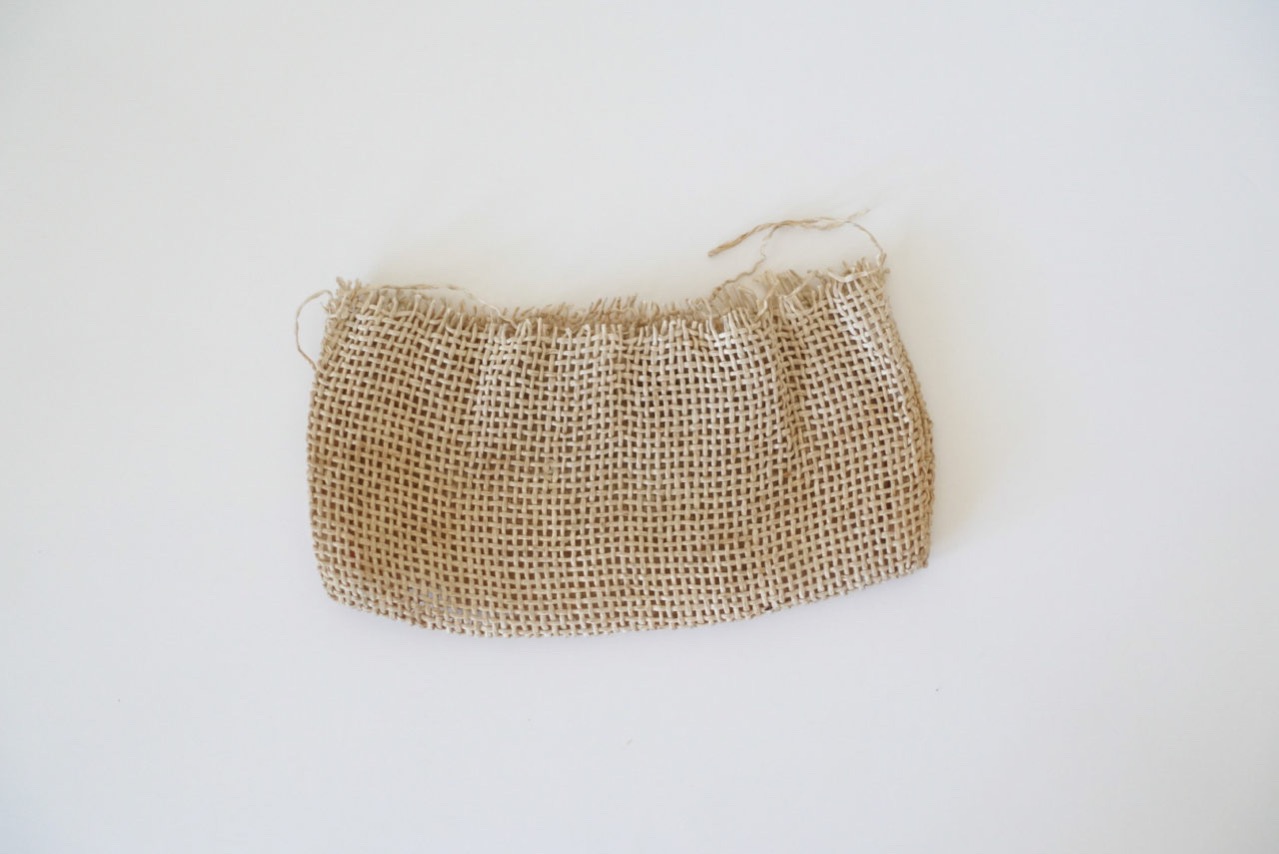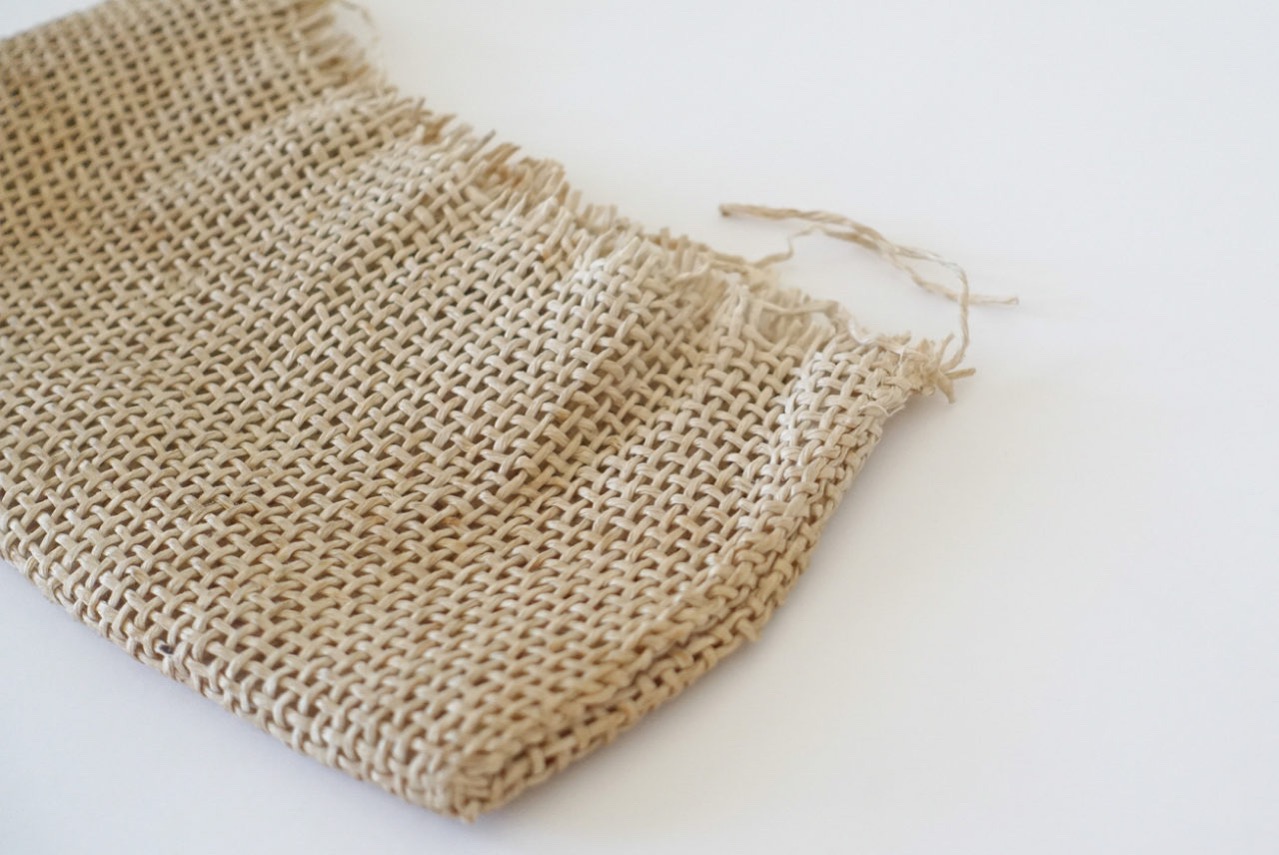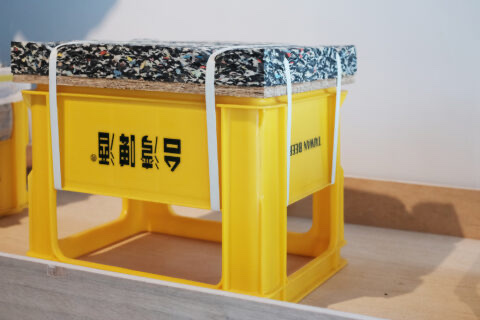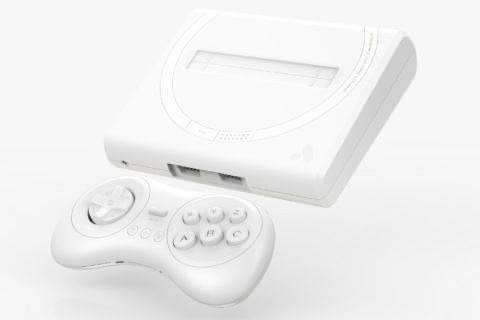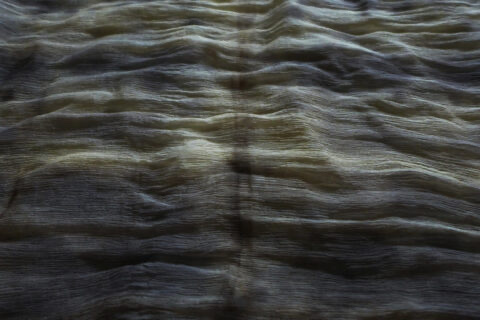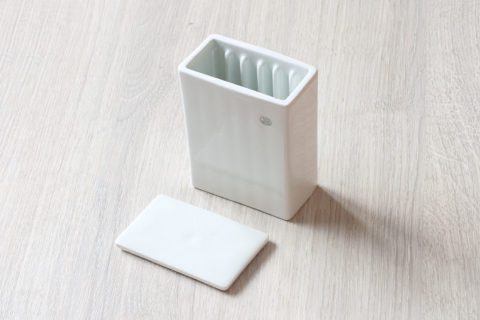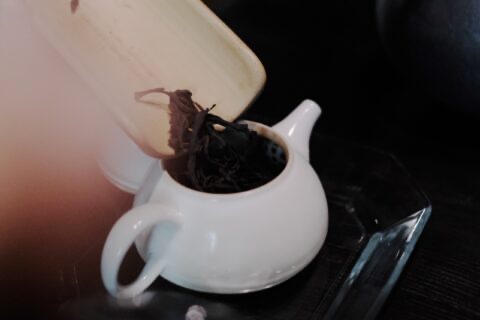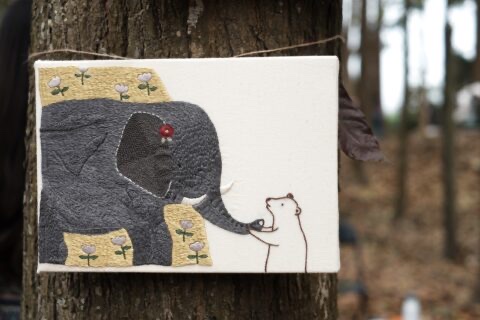
R:林琪香 Ron Lam / M:金森正起 Masaki Kanamori
R:這個是甚麼呢?是紙條編成的嗎?
M:這是紙縒,是以和紙搓成的紙條編製而成的東西。
R:是日本的工藝品嗎?
M:這個應該是來自日本的,但我第一次真正注意到的紙縒則是來自韓國李朝的。以往去韓國旅行,或在日本國內售賣韓國古物的店舖中,都會特意尋找。那些紙縒大都是一些日常用品,為了使其堅固耐用,通常都編得緊密,表面塗上漆,而我最喜歡當中一些素白的器物。它們形態柔美,看來沒有作任何塗裝,這點我不太肯定,但紙材的質感很質樸,故我如此猜想。這些李朝的紙縒,跟這個袋子的處理方法是完全不同的。我現在仍很喜歡李朝時代造工仔細的紙縒,不過相比之下,更喜歡這種粗糙的。
R:它的頂部沒有封口呢,是未完成品嗎?
M:不太肯定呢,也可能已經完成了,只是開口處損壞了而已。
R:之於你,它的魅力是甚麼呢?
M:我本來就很喜歡紙這素材的了,另外,我想它流露出來的脆弱的氣質吧。
R:雖然你的作品的素材以金屬為主,然而卻對紙、陶土、布等素材情有獨鍾,而且常聽到你說,希望作品呈現出「布料」、「紙品」等的氣氛,對此,我一直都感到很有趣。金屬予人的感覺是冰冷的,而布及紙則是柔軟而溫暖的,兩者有很大的差別。
M:是呢,我對自己的金屬作品的要求,其中一項就是希望看來是柔軟而溫暖的,這跟其他現代金工藝家,強調金屬的剛勁、利落有很大的差異吧。每一種素材都有其「発信力」(拼音:Hassinryoku),亦即是傳達信息的能力,我不知道用在這裡對不對,只是我自己的感覺而已。
R:素材的傳訊能力嗎?比方說呢?
M:例如實心的材料,正如實木與合成木板傳達出來的訊息就很不一樣,金屬也同樣,用實心鐵材造成的手把,跟金屬管造成的手把,即使形狀相同,訊息也截然不同。泥土、布料、紙張,不同狀態之下,都流露出不同的訊息。在處在同一個空間裡,各種的訊息需要取得平衡,哪個訊息特別響亮的話,便會顯得格格不入了。在跟建築師合作,替建築物造鐵閘、信箱等時,我尤其重視訊息的平衡,多了解建築物的設計、使用的材料、建築物所在的環境等,才決定使用甚麼物料,做怎樣的設計。
R: What is this? Is this crocheted out of paper strips?
M: This is called Koyori. It is crocheted with twisted strings of traditional Japanese paper washi.
R: Is this traditional craft originally from Japan?
M: I believe it is from Japan, but the first Koyori I got to know was from the Joseon dynasty of Korea. I would always spare time looking for this kind of paper when traveling to Korea; I would also visit shops in Japan that are specialized in Korean antiques. This kind of papercraft is usually made for practical use. The paper strips are crocheted tightly together before being coated with lacquer to enhance durability. My favorite is the pure white ones that appear so soft as if they weren’t lacquered. This is just my guess seeing how subtle the textures appear to be. I’m still fond of those Koyori from the Joseon dynasty for their delicacy, but in comparison, I prefer the coarse quality of the roughly made ones.
R: Its top doesn’t look completed yet. Is it an unfinished piece of work?
M: I’m not quite sure. It could be finished already but only got its opening damaged.
R: What is the charisma of this craft to you?
M: I’ve always been drawn to paper as a medium. I guess I wanted to express the fragile quality of this material.
R: Although the media of your works have been mainly dominated by metal, you seem to have a particular fondness for materials like paper, ceramic, and fabric. It is quite often to hear how you want to exhibit the vibe of these materials. I am always intrigued by this idea. Metal exudes a cold luster, whereas fabric and paper appear gentle and mellow. There is a huge contrast between them.
M: That’s right. One of the aims of my metalwork is to show the tender and warm side of the material. This is a far cry from how other modern metal artists try to express the boldness of it. Each of every material has its power to communicate. I am not sure if this is a good way to put it, but this is how I feel.
R: Could you elaborate on this “power to communicate”?
M: For instance, the messages conveyed by solid and synthetic wood planks are very different. The same goes for metal. Even a handle made of solid iron holds the same shape as one made of a metal pipe, the messages they give are absolutely different. Soil, fabric, paper, everything can convey a different message at a different state. Within the same space, all types of information need to strike a balance. If one material speaks too much volume, it would appear out of place. When I work with architects and customize parts like metal gates and letterboxes, I really stress on such balance of different messages. I have to understand the design of the building, its materials, the overall environment, before determining what materials and design I should go for.
